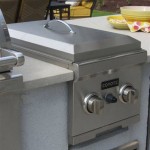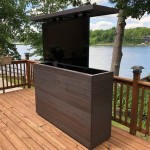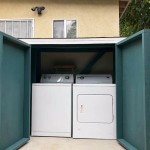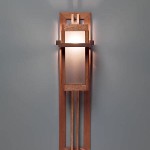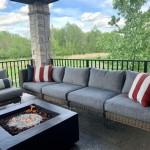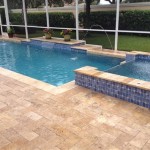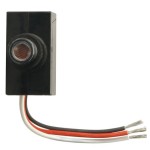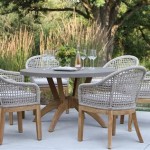Outdoor Metal Palm Tree Sculpture: A Durable and Stylish Landscape Accent
Outdoor metal palm tree sculptures have become increasingly popular as decorative elements for gardens, patios, and commercial landscapes. Their enduring materials and stylised design offer a blend of tropical aesthetics and modern durability, making them a sought-after alternative to real palm trees in certain climates or design schemes. This article explores the various facets of outdoor metal palm tree sculptures, encompassing materials, construction, design considerations, maintenance, and suitability for different outdoor environments.
The allure of metal palm tree sculptures lies in their ability to evoke the ambiance of tropical destinations without the demands of live plant care. Unlike real palm trees that require specific climate conditions, watering schedules, and potential pest control, metal sculptures are resilient and require minimal upkeep. This makes them appealing for individuals and businesses seeking to add visual interest to their outdoor spaces without the ongoing responsibilities associated with living vegetation.
The selection of an outdoor metal palm tree sculpture should be based on a thorough understanding of its construction, material properties, and the specific environmental conditions it will be exposed to. Careful consideration should also be given to the overall design aesthetic and how the sculpture will integrate with the existing landscape. Factors such as size, scale, style detailing and protective coatings contribute to the longevity and visual impact of the sculpture.
Material Composition and Durability
The primary materials used in the construction of outdoor metal palm tree sculptures are typically steel, aluminum, and occasionally copper. Each material offers distinct advantages and disadvantages concerning cost, weight, corrosion resistance, and structural integrity. The choice of material fundamentally dictates the sculpture's lifespan and its ability to withstand various weather conditions.
Steel is a strong and relatively affordable option, often used for the main trunk and structural components of larger sculptures. However, steel is susceptible to rust if not properly treated and protected. Sculptures made of steel undergo surface treatments, such as galvanization or powder coating, to enhance their corrosion resistance. Galvanization involves coating the steel with a layer of zinc, which acts as a barrier against moisture and oxidation. Powder coating is a process where a dry powder, typically an epoxy or polyester-based polymer, is applied electrostatically to the steel surface and then cured under heat, forming a durable and protective finish.
Aluminum is a lighter and more corrosion-resistant alternative to steel. It naturally forms a protective oxide layer when exposed to air, which helps to prevent rust. Aluminum sculptures are well-suited for coastal environments or areas with high humidity. However, aluminum is generally more expensive than steel, so the initial purchase cost could be higher. Because aluminum is lighter than steel, it may require more robust anchoring in locations prone to high winds.
Copper, while less common, is sometimes employed for decorative elements or smaller palm tree sculptures. Copper has a distinctive aesthetic, developing a characteristic green patina over time as it oxidizes. This patina can be visually appealing, lending an antique or weathered look to the sculpture. However, copper is a relatively soft metal compared to steel and aluminum, and it may be more susceptible to damage from physical impact. The cost of copper is also considerably higher than that of steel or aluminum, making it a less practical choice for larger sculptures.
Construction and Design Elements
The construction of a metal palm tree sculpture involves several stages including design, fabrication, and finishing. A detailed design is crucial to ensure the sculpture is structurally sound and aesthetically pleasing. A design often begins with a sketch or computer-aided design (CAD) model, depicting the dimensions, proportions, and detailing of the sculpture. The fabrication process varies depending on the complexity of the design and the materials used.
Steel sculptures often involve welding together individual steel components to form the trunk, fronds, and base. Aluminum sculptures can be fabricated using welding, casting, or a combination of both. Welding requires skilled craftsmanship to ensure strong and seamless joints. Casting involves pouring molten metal into a mold to create complex shapes and intricate details. The method used also affects the overall cost of the sculpture, welded sculptures being generally less expensive than cost sculptures.
The design of the palm fronds is a significant visual element. Fronds can be fabricated from sheet metal, cut and shaped to mimic the natural curves and textures of real palm leaves. Some sculptures incorporate perforated or lattice-like patterns in the fronds to allow wind to pass through, reducing the risk of wind damage. The fronds are then attached to the trunk using welding, bolting, or other secure fastening methods. The design of the base should provide a stable foundation for the sculpture, preventing it from tipping over in windy conditions. The base can be a simple flat plate, a decorative pedestal, or a more elaborate structure that integrates with the surrounding landscape.
The attention to detail and design of the sculpture can significantly impact its overall aesthetic. Some sculptures are designed to be highly realistic, closely resembling a real palm tree in terms of proportions and detailing. Others are more stylized or abstract, emphasizing geometric shapes and artistic expression. The style should complement the surrounding architecture and landscaping.
Installation, Maintenance, and Environmental Considerations
Proper installation is essential for the stability and longevity of an outdoor metal palm tree sculpture. The method of installation depends on the size and weight of the sculpture, as well as the type of ground surface. Smaller sculptures can often be anchored with stakes or bolts into the ground. Larger sculptures may require a concrete foundation to provide a secure and stable base. In high-wind areas, it is crucial to consult with a structural engineer to ensure the sculpture is adequately anchored to withstand wind loads.
Metal palm tree sculptures require minimal maintenance compared to live plants. However, periodic cleaning is necessary to remove dirt, dust, and debris. Regular cleaning can be done with soap and water, followed by rinsing and drying. For steel sculptures, it is important to inspect the surface regularly for signs of rust. If rust is detected, it should be removed and the affected area should be treated with a rust-inhibiting primer and paint or protective coating. For sculptures located in coastal environments, it may be necessary to apply a protective coating more frequently to combat the corrosive effects of salt air.
Environmental factors play a significant role in the selection and placement of metal palm tree sculptures. In areas with heavy snowfall, it is important to ensure that the sculpture is strong enough to withstand the weight of the snow. In areas with extreme temperature fluctuations, it is important to choose materials that are resistant to cracking or warping. The placement of the sculpture should also consider sun exposure and potential shading effects on nearby plants. The sculpture should be positioned to minimize its impact on the growth and health of surrounding vegetation. Metal sculptures can become hot in direct sunlight, so it is important to avoid placing them near flammable materials or where they could pose a burn risk to people or animals.
In conclusion, outdoor metal palm tree sculptures offer a durable and stylish way to incorporate tropical elements into outdoor spaces. The choice of materials, design considerations, and installation influence the sculpture's longevity and visual appeal. When selecting a metal palm tree sculpture, one should consider the environmental challenges and ongoing maintenance requirements to ensure that the sculpture enhances the landscape for years to come.

Popular Outdoor Metal Palm Tree Sculpture Art Design

Outdoor Metal Palm Trees Sculpture For Sale

Popular Outdoor Metal Palm Tree Sculpture Art Design

Products Designer Palms

Palm Tree Sculpture For Sale Stainless Steel

Holiday Village Metal Palm Tree Sculpture For Outdoor Art

Large Outdoor Metal Palm Tree Sculpture Dzm 1462 D Z Art

Coconut Palm Tree Silver Fine Art Customize Outdoor Large Metal Sculpture

Pin Page

Products Designer Palms

